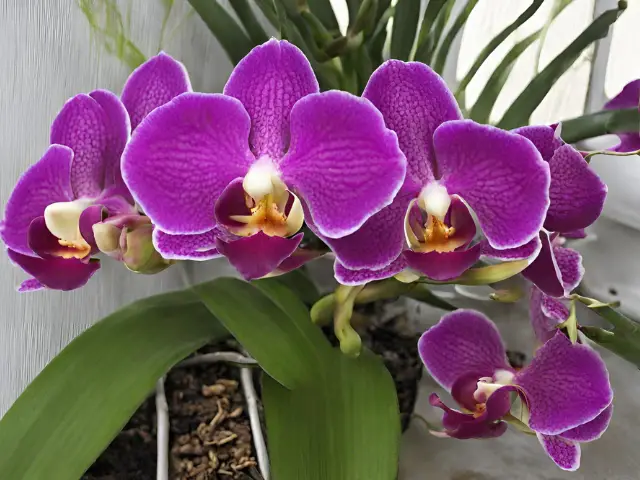Orchids are undoubtedly one of the most delicate and graceful flowers that can bring a touch of elegance to any space. With their vibrant colors and intricate blooms, they have become a popular choice for many garden enthusiasts. While growing orchids in containers may seem challenging, with the right tips and techniques, anyone can successfully cultivate these beautiful flowers. Here are some essential tips to help you grow stunning orchids in containers.
1. Choose the Right Container: Orchids grow best in pots or containers that provide adequate drainage. Select a container with several drainage holes at the bottom, allowing excess water to escape easily. The material of the pot is also important; opt for clay or plastic pots as they retain moisture well, allowing for better root aeration.
2. Select an Appropriate Potting Mix: Orchids require a specialized potting mix that promotes drainage while retaining enough moisture for healthy root growth. Typically, an orchid mix consists of bark chips, sphagnum moss, perlite, or coconut coir that provides excellent drainage and air circulation while retaining some moisture.
3. Provide Adequate Light: Orchids thrive in bright but indirect light conditions. Place your container near a window where it receives ample filtered sunlight throughout the day. Avoid exposing them to direct sunlight as it can scorch their delicate leaves.
4. Maintain Optimal Temperature and Humidity: Orchids prefer temperatures between 60-80°F (15-27°C) during the day and slightly cooler temperatures at night. They also require high humidity levels ranging from 50-70%. To increase humidity, you can place a tray filled with water near your orchid container or use a humidifier.
5. Watering Regularly but Carefully: Orchids have specific watering needs; they don’t like sitting in soggy soil but also dislike completely drying out. Water your orchid when the potting mix feels slightly dry to touch by watering thoroughly until water runs out of the drainage holes. Allow the excess water to drain completely before placing the container back in its spot.
6. Fertilize Strategically: Feed your orchids with a balanced orchid fertilizer regularly during their active growth period, typically every two weeks. However, it is crucial to dilute the fertilizer to half or quarter strength as too much can damage their delicate root systems.
7. Prune and Divide Wisely: As your orchid grows, you may notice dead or yellowing leaves or crowded roots. Prune away any damaged or decaying parts using sterilized pruning shears. If your orchid becomes overcrowded, consider dividing it into smaller sections while repotting to encourage healthier growth.
8. Be Patient and Observant: Growing orchids successfully requires patience and keen observation. Understand that they have their natural growth patterns and may not bloom year-round. Pay attention to any changes in leaf color, root health, or overall plant vigor as these could indicate underlying issues that need attention.
9. Seek Expert Advice: There is a wealth of information available on growing orchids online and through local horticultural societies or orchid enthusiasts’ groups. Don’t hesitate to seek expert advice whenever needed and learn from experienced growers’ experiences.
Growing beautiful orchids in containers can be a rewarding experience for both beginners and seasoned gardeners alike. Along with the joy of seeing these stunning flowers bloom, you can enjoy the satisfaction that comes from successfully nurturing these captivating plants. By following these tips and learning from your own experiences, you’ll be well on your way to creating an enchanting display of vibrant orchids in your home or garden space.














